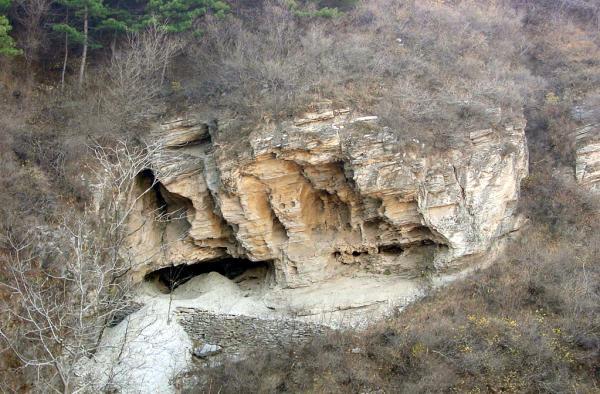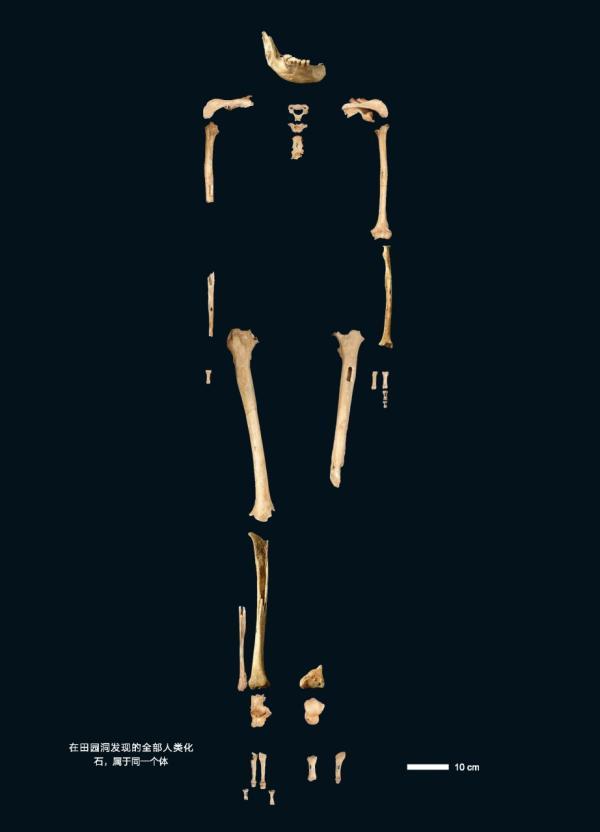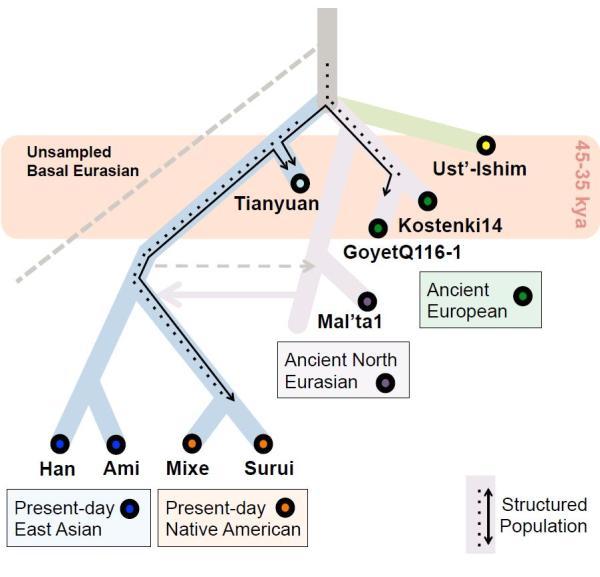


The Tianyuan Cave site
A team of Chinese and German scientists has for the first time reconstructed the genome of an ancient Chinese person after extracting nuclear and mitochondrial DNA from the man’s leg bone, which was found in 2003 at the Tianyuan Cave site, located outside Beijing, Chinese media outlet thepaper.cn reported on Oct. 13.
The scientists used new techniques that can identify ancient genetic material from an archaeological find even when large quantities of DNA from soil bacteria are present.
Comparing that data with other genomic data, the scientists carried out thorough studies on this hard-won genetic profile.

Skeleton of Tianyuan Man
According to Fu Qiaomei, a researcher on the project, Tianyuan Man shares DNA with one ancient European—a 35,000-year-old modern human from Goyet Caves in Belgium. However, the results show that Tianyuan Man is more closely related with ancient people living in East Asia.
Tianyuan Man is not the immediate ancestor of the present-day people in East Asia, according to Fu. This branch of ancient East Asians has become extinct at some point of time in history.
The finding was published in the international academic journal Current Biology on Oct. 13. In addition, it has also offered a surprising insight into the evolution of ancient Native Americans.
The big surprise here is that Tianyuan Man also shares a close genetic relationship with Native Americans living in the Amazon region. It suggests that this group of people might be the offspring of an unknown branch of ancient humans who had a connection with Tianyuan Man.

 Fire brigade in Shanghai holds group wedding
Fire brigade in Shanghai holds group wedding Tourists enjoy ice sculptures in Datan Town, north China
Tourists enjoy ice sculptures in Datan Town, north China Sunset scenery of Dayan Pagoda in Xi'an
Sunset scenery of Dayan Pagoda in Xi'an Tourists have fun at scenic spot in Nanlong Town, NW China
Tourists have fun at scenic spot in Nanlong Town, NW China Harbin attracts tourists by making best use of ice in winter
Harbin attracts tourists by making best use of ice in winter In pics: FIS Alpine Ski Women's World Cup Slalom
In pics: FIS Alpine Ski Women's World Cup Slalom Black-necked cranes rest at reservoir in Lhunzhub County, Lhasa
Black-necked cranes rest at reservoir in Lhunzhub County, Lhasa China's FAST telescope will be available to foreign scientists in April
China's FAST telescope will be available to foreign scientists in April "She power" plays indispensable role in poverty alleviation
"She power" plays indispensable role in poverty alleviation Top 10 world news events of People's Daily in 2020
Top 10 world news events of People's Daily in 2020 Top 10 China news events of People's Daily in 2020
Top 10 China news events of People's Daily in 2020 Top 10 media buzzwords of 2020
Top 10 media buzzwords of 2020 Year-ender:10 major tourism stories of 2020
Year-ender:10 major tourism stories of 2020 No interference in Venezuelan issues
No interference in Venezuelan issues
 Biz prepares for trade spat
Biz prepares for trade spat
 Broadcasting Continent
Broadcasting Continent Australia wins Chinese CEOs as US loses
Australia wins Chinese CEOs as US loses